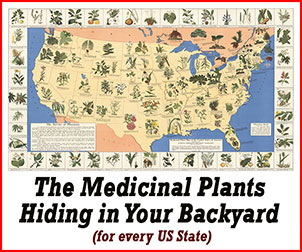Lomatium
Background & General Info
Lomatium is a genus of genetically diverse, edible perennial herbs indigenous to western North America. The plant species belonging to this genus are members of Apiaceae, or the parsley or carrot family. Like any member of the carrot family, Lomatium species produce umbrella-shaped clusters of small flowers that resemble those of dill and fennel. [1] Unlike other herbs, plants belonging to the Lomatium genus are inconsistently and infrequently named in English.
A notable example species of Lomatium is the fernleaf biscuitroot or desert parsley (Lomatium dissectum), which is considered a necessary component of rangelands of western United States where it is native. It thrives on the rocky soils and in meadows of western North America at elevations from sea level to 2500 meters, with habitats spanning from southern California, to British Columbia, to the Rocky Mountains. [2] Other common Lomatium species include Gray’s biscuitroot (Lomatium grayi), nineleaf biscuitroot (Lomatium triternatum), Suksdorf’s desert parsley (Lomatium suksdorfii), and barestem biscuitroot (Lomatium nudicaule). [1]

Lomatium - Botany
Lomatium suksdorfii is a stout glabrous perennial with a taproot, yellow flowers, and branching woody base. Its large basal leaves are dissected into long, narrow, acute ultimate segments, whereas its inflorescence of compound umbels comprise rays that are 6–11 centimeters long at maturity. Its very large fruits are elliptic and have raised dorsal ribs. [3]Lomatium californicum is characterized by coarsely toothed to lobed blue-green leaves and appears similar to the common celery as regards its features and taste. It bears yellow flowers in broad umbels.
Lomatium dissectum is a perennial herbaceous wildflower species characterized by yellow, purple, or green/brown flowers in compound umbels on the top of stalks and highly dissected, fern-like leaves. Its shoot forms from a crown of large, fleshy taproot in early spring, and the plant starts to blossom before the last frosts. [2]
Lomatium - History & Traditional Use
For hundreds of years, the desert parsley has been regarded by the local populations in the western United States as a source of both food and medicine. Native Americans even used the plant as a piscicide and consumed the starchy edible taproots. [2] The dried roots of desert parsley are traditionally burnt and the smoke that forms is supposedly inhaled to treat asthma and other chest problems. The roots are also incorporated in herbal steam baths to relieve chest complaints and, together with the leaves, are made into a tonic drink or infusion for weakened individuals. Peeled and crushed roots are applied as poultice to open cuts, sores, boils, bruises, and rheumatic joints. [4]
Because of morphological similarities of various Lomatium species, especially their leaf morphology, there exists difficulty in credibly linking specific uses of these plants to their historic, ethnobotanical records, and in fact, only 20 Lomatium species had been mentioned in ethnobotanical literature out of the more than 70 Lomatium species in western North America.
Lomatium - Herbal Uses
Latest pharmacological investigation on Lomatium dissectum has demonstrated its antiviral and antibacterial activities, especially against rotavirus and mycobacterial species. [2] Several native North American Indian tribes employ the desert parsley as a medicinal plant for chest disorders and skin complaints, and the dried taproots are considered as disinfectant, pectoral, salve, stomachic, and tonic that can be used as remedy of rheumatism, stomach illnesses, coughs, colds, hay fever, bronchitis, influenza, pneumonia, and tuberculosis. [4]

Lomatium - Constituents / Active Components
Chou et al. (2006) identified six compounds from the ethyl acetate and hexane extracts of Lomatium californicum roots, namely, (+)-falcarindiol, coniferyl ferulate, ferulic acid, (Z)-ligustilide, senkyunolide I, and trans-neocnidilide, although the latter two constituents were isolated in too small quantity only. [5] Meepagala et al. isolated active constituents of Lomatium californicum using bioassay-guided fractionation and determined the Z-ligustilide content of Lomatium californicum seeds to be 97 milligram/gram of dry seed. [6] Analysis of the hydrodistilled oils from the fruits, stems, leaves, and roots of Lomatium dissectum var. dissectum by a 2004 study indicated the following as the major components: β-phellandrene/limonene (25.3%), β-caryophyllene (10.8%), palmitic acid (6.6%), (E)-β-ocimene (5.4%), linolenic acid (4.7%), palmitic acid (15.3%), octanol (9.0%), octyl acetate (5.3%), β-caryophyllene (4.1%), linolenic acid (4.8%), myrcene (19.0%), 4-methylpentyl 2-methylbutyrate (13.9%), limonene (5.8%), α-bisabolol (5.1%), cuparene (5.0%), and 4-methylhexyl 2-methylbutyrate (4.2%). [7]
Lomatium - Medicinal / Scientific Research
Antibacterial And Antifungal:
Bioactivity testing carried out by Chou et al. (2006) confirmed the antibacterial activity of compounds isolated from ethyl acetate and hexane extracts of roots of Lomatium californicum, namely, (+)-falcarindiol, coniferyl ferulate, ferulic acid, and (Z)-ligustilide. These compounds were found to be effective against Bacillus subtilis and Staphylococcus aureus (Gram-positive bacteria). [5] Meepagala et al. (2005) conducted preliminary bioassays on methylene chloride extract of Lomatium californicum seeds and demonstrated its antifungal activity against Colletotrichum fragariae. [6]
A 2008 Canadian study evaluated the antibiotic activity of a hundred methanol extracts from plants against Mycobacterium tuberculosis and Mycobacterium avium, both of which are notorious pathogenic causes of systemic or local infection. It was demonstrated that extract from Lomatium dissectum roots totally inhibited the growth of both Mycobacterium tuberculosis and Mycobacterium avium at a dose equivalent to 100 mg dried plant material/disc. [8] According to an early study, homologous 2-alkenyl-3-hydroxy-penta-2,4-dien-4-olides isolated from Lomatium dissectum are among the primary antimicrobial metabolites of this plant’s crude extracts. [9]
Antiviral:
McCutcheon et al. (1995) evaluated the antiviral activity of 100 methanolic plant extracts against seven viruses. At a non-cytotoxic concentration, tested extract from Lomatium dissectum roots entirely inhibited the cytopathic (cell-damaging) effects of rotavirus, a contagious virus that can cause gastroenteritis and diarrheal disease among infants and young children. [10]
HIV/AIDS:
Lomatium suksdorfii has recently received attention as an herb possessing natural compounds with enormous potential against human immunodeficiency virus (HIV). Suksdorfin, a pyrocoumarin derivative that can be extracted from Lomatium suksdorfii fruits, has been proven to prevent the replication process of HIV-1 in the T cell line, H9, reaching an average EC50 value of 2.6 ± 2.1 µM. It has also been found to exhibit inhibitory activities during acute HIV-1 infections of peripheral blood mononuclear cells, monocytes and macrophages, and human U937 promonocytic cell line and to display synergistic effects with anti-HIV nucleosides ddI and ddC in deterring HIV-1 replication. [11]
Lomatium - Contraindications, Interactions, And Safety
Overall, there have been few clinical trials attesting the safety of Lomatium as a medicinal herb. Its contraindications as well as possible drug interactions have not been solidly established, so caution is advised, especially for pregnant and lactating women.
References:
[1] D. Murphy, "What’s Blooming," Idaho Botanical Garden, 11 April 2016. https://idahobotanicalgarden.org/whats-blooming-4112016/#more-5297
[2] M. P. Shock, C. C. Shock, E. B. Feibert, et al., "Cultivation and irrigation of fernleaf biscuitroot (Lomatium dissectum) for seed production," HortScience, vol. 47, no. 10, p. 1525–1528, 2012. https://hortsci.ashspublications.org/content/47/10/1525.full
[3] D. Knoke and D. Giblin, "Lomatium suksdorfii: Suksdorf's desert-parsley," Burke Museum of Natural History and Culture. https://biology.burke.washington.edu/herbarium/imagecollection.php?ID=117
[4] D. Moerman, Native American Ethnobotany, Oregon: Timber Press, 1998.
[5] S. Chou, M. Everngam, G. Sturtz and J. Beck, "Antibacterial activity of components from Lomatium californicum," Phytotherapy Research, vol. 20, no. 2, p. 153–156, 2006. https://www.ncbi.nlm.nih.gov/pubmed/16444670
[6] K. Meepagala, G. Sturtz, D. Wedge, K. Schrader and S. Duke, "Phytotoxic and antifungal compounds from two Apiaceae species, Lomatium californicum and Ligusticum hultenii, rich sources of Z-ligustilide and apiol, respectively," Journal of Chemical Ecology, vol. 31, no. 7, p. 1567–1578, 2005. https://www.ncbi.nlm.nih.gov/pubmed/16222793
[7] S. Bairamian, P. S. Beauchamp, J. T. Descalzo and e. al., "California lomatiums part III. Composition of the hydrodistilled oils from two varieties of Lomatium dissectum. Isolation of a new hydrocarbon," Journal of Essential Oil Research, vol. 16, no. 5, p. 461–468, 2004. https://www.tandfonline.com/doi/abs/10.1080/10412905.2004.9698772
[8] A. McCutcheon, R. Stokes, L. Thorson, et al., "Anti-mycobacterial screening of British Columbian medicinal plants," International Journal of Pharmacognosy, vol. 35, no. 2, p. 77–83, 2008. https://www.tandfonline.com/doi/abs/10.1076/phbi.35.2.77.13284?journalCode=iphb19
[9] B. C. Vanwagenen and J. H. Cardellina, "Native American food and medicinal plants 7 : Antimicrobial tetronic acid from Lomatium dissectum," Tetrahedron, vol. 42, no. 4, p. 1117–1122, 1986. https://www.sciencedirect.com/science/article/pii/S0040402001875153
[10] A. McCutcheon, T. Roberts, E. Gibbons, S. Ellis, et al., "Antiviral screening of British Columbian medicinal plants," Journal of Ethnopharmacology, vol. 49, no. 2, p. 101–110, 1995. https://www.sciencedirect.com/science/article/pii/0378874195900373
[11] T. Lee, Y. Kashiwada, L. Huang, J. Snider, M. Cosentino and K. Lee, "Suksdorfin: an anti-HIV principle from Lomatium suksdorfii, its structure-activity correlation with related coumarins, and synergistic effects with anti-AIDS nucleosides," vol. 2, no. 10, p. 1051–1056, 1994. https://www.ncbi.nlm.nih.gov/pubmed/7773621
Article researched and created by Dan Ablir for herbshealthhappiness.com.
© herbshealthhappiness.com


1. Famous Chef Sheds 60lbs Researching New Paleo Recipes: Get The Cookbook FREE Here
2. #1 muscle that eliminates joint and back pain, anxiety and looking fat
3. Drink THIS first thing in the morning (3 major benefits)
4. [PROOF] Reverse Diabetes with a "Pancreas Jumpstart"
5. Why Some People LOOK Fat that Aren't
6. Amazing Secret Techniques To Protect Your Home From Thieves, Looters And Thugs
7. The #1 WORST food that CAUSES Faster Aging (beware -- Are you eating this?)
![]()
![]()
![]()
If you enjoyed this page:






























